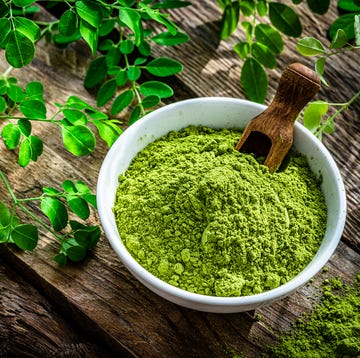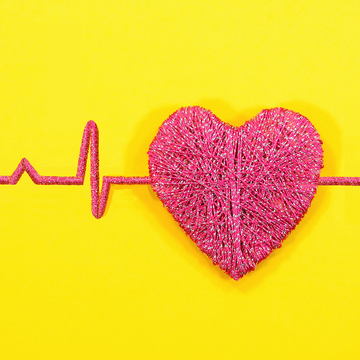From viral drinks that promise to jumpstart one's digestion to pushing supplements to boost immunity, there are endless TikTok posts about ways to live "healthier." A few of them are accurate, but as a nutritionist, I find that most of them are illegitimate — or at least, not telling the whole story.
The latest one that everyone is talking about? Adding a pinch of salt to your water to boost hydration.
First, I'll say that sodium is a vital electrolyte for hydration, working with potassium to regulate fluid balance and maintain proper pH levels in the body. This balance is crucial for maintaining blood volume, blood pressure and cellular health.
But while it's important to keep fluid and electrolyte levels balanced, too much sodium from sources like table salt can disrupt this balance. When you consume a lot of sodium, your body retains more water to balance it out. This increases blood volume and puts additional pressure on your heart and blood vessels. Over time, this can result in high blood pressure, and increase the risk of strokes and heart attacks.
So, is this a #HealthTok moment that falls into a clever hack or is it a complete myth? As a registered dietitian, I'm breaking it down for you.
Yes, salt water may be helpful in some cases.
Adding salt to water can be beneficial if you've experienced significant electrolyte losses from sweating heavily or frequent urination, especially during hot weather. This can help replenish electrolytes, says Florida-based performance dietitian Jenna Braddock, which can restore energy levels and alleviate symptoms like headaches. Another critical scenario where electrolytes might be helpful is during illness, particularly when experiencing fever, vomiting or diarrhea.
Osmolality, which refers to the concentration of particles in a fluid, affects how well a beverage hydrates explains Braddock. "Research suggests that beverages with higher osmolality than water, containing more particles, are better absorbed into the body's tissues. There does seem to be a certain threshold of osmolality required to achieve better absorption, but it is unlikely that a pinch of salt in water meets it,” she adds. This doesn’t mean that water alone isn’t hydrating; instead, it highlights that different types of beverages can play a role in achieving optimal hydration.
Braddock highlights that while personalized electrolyte replacement plans are common in sports to optimize performance based on individual needs, for most people, daily dietary sodium intake is typically already adequate.
A 2023 review published in Cureus found that long-haul COVID-19, which involves ongoing symptoms after the initial illness, may lead to conditions like postural orthostatic tachycardia syndrome (POTS) in some individuals. Managing POTS symptoms often involves maintaining adequate sodium intake to regulate blood volume and fluid balance, which helps alleviate symptoms such as dizziness and fainting when standing. Some individuals with POTS may have higher salt needs to effectively manage their condition and prevent these symptoms.
But each grain of salt matters, and most people exceed the limit.
Adding a "pinch" of salt to water is a common practice, but it's not always accurate and can lead to excessive sodium intake.
Adults are advised to consume at least 1500 mg of sodium daily (especially if you have cardiovascular disease), with 2300 mg as a daily limit. “One teaspoon of table salt has about 2300 mg of sodium and a dash, or pinch, of salt is estimated to have about 155 mg,” adds Braddock. According to the CDC, Americans typically consume well over that amount, approximately 3300 milligrams per day. While adding a pinch of salt to water remains below the recommended daily allowance, it's important to be mindful of overall sodium intake and losses.
Different types of salt, such as Kosher and sea salt, often have larger crystals than table salt, which can result in slightly lower sodium content per volume. However, the sodium content can vary depending on the brand and processing methods. Sea salt may also contain trace minerals, but these typically do not significantly impact health according to Braddock. Many opt for sea salt or Kosher salt due to their preferred taste, and natural sourcing with each brand differing in sodium content.
For most people, adding salt to water for hydration isn't necessary as diets usually provide adequate sodium, sometimes more than needed. Excessive sodium intake can lead to health issues like high blood pressure, affecting vascular health. "Many people could benefit from consuming more potassium-rich foods like fruits and vegetables to counteract excessive sodium intake and promote better vascular health," adds Braddock.
Drinking salted water once after intense exercise in hot conditions is usually enough to replace lost sweat. Normally, your sodium needs are met by your next meal or snack unless you've sweated excessively. For workouts lasting over an hour, consider using an electrolyte powder to effectively replenish electrolytes.
There are better ways to stay hydrated.
As you know, staying hydrated is essential for overall health. Consistently drink plain water throughout the day and keep a reusable water bottle handy for hydration while on the move. Incorporate water-rich foods like cucumbers, strawberries and watermelon into meals and snacks to boost daily fluid intake. Enjoy herbal teas and fruit-infused water as flavorful alternatives without added sugars.
Watch for signs of dehydration, such as dark urine, dry mouth, headache, fatigue, and dizziness, and use urine color as a simple gauge — aim for pale yellow to clear urine for optimal hydration.
The bottom line:
Adding a pinch of salt to water can replenish electrolytes after sweating, but it's typically unnecessary for daily hydration. Excessive sodium can be harmful, especially for those with cardiovascular or renal health concerns. It's also important to watch out for signs of dehydration, such as dark yellow or amber-colored urine, dry mouth, headache, fatigue, and dizziness. Before incorporating salt water into your routine, do a quick check-in with your healthcare provider.












